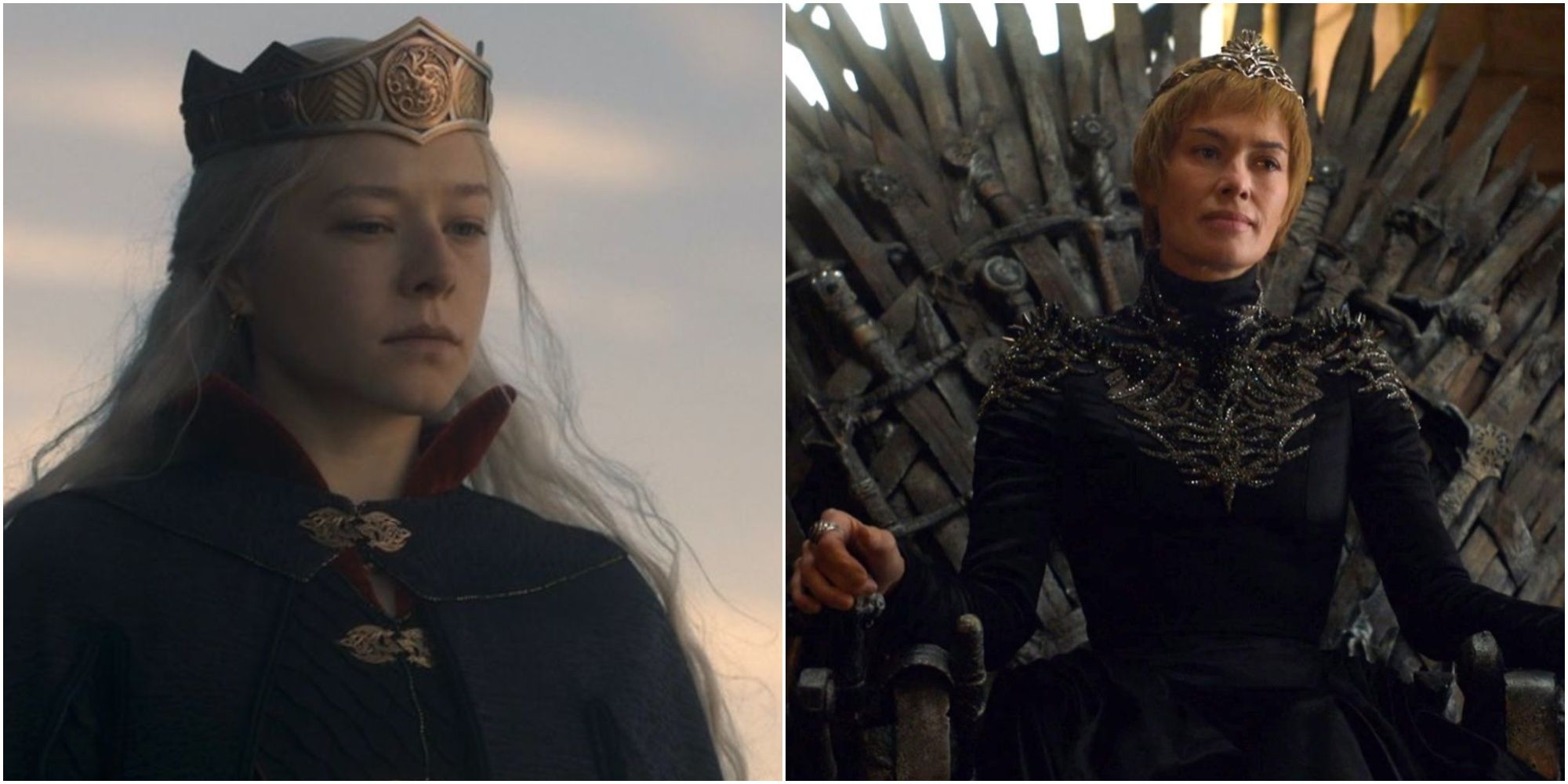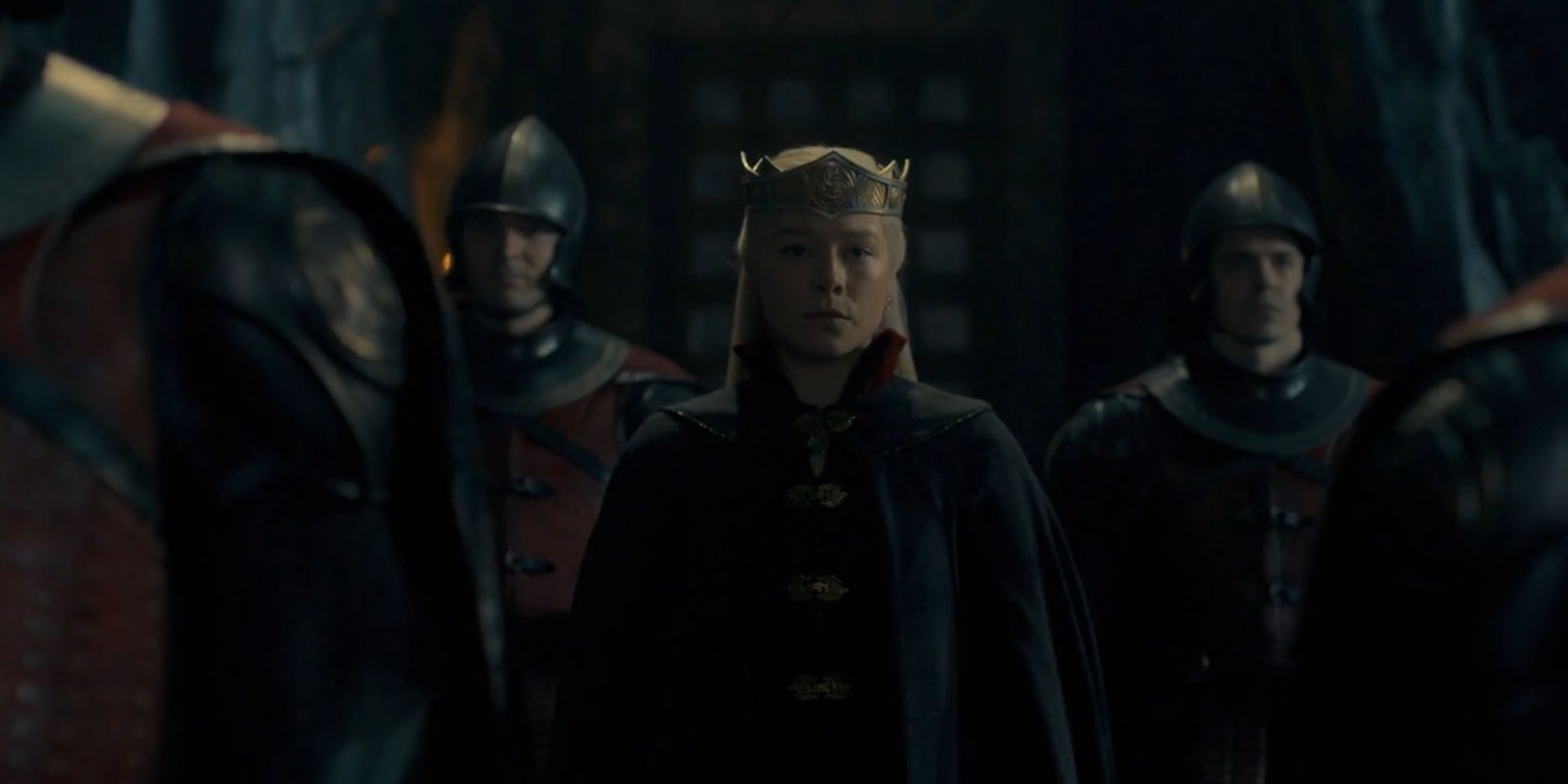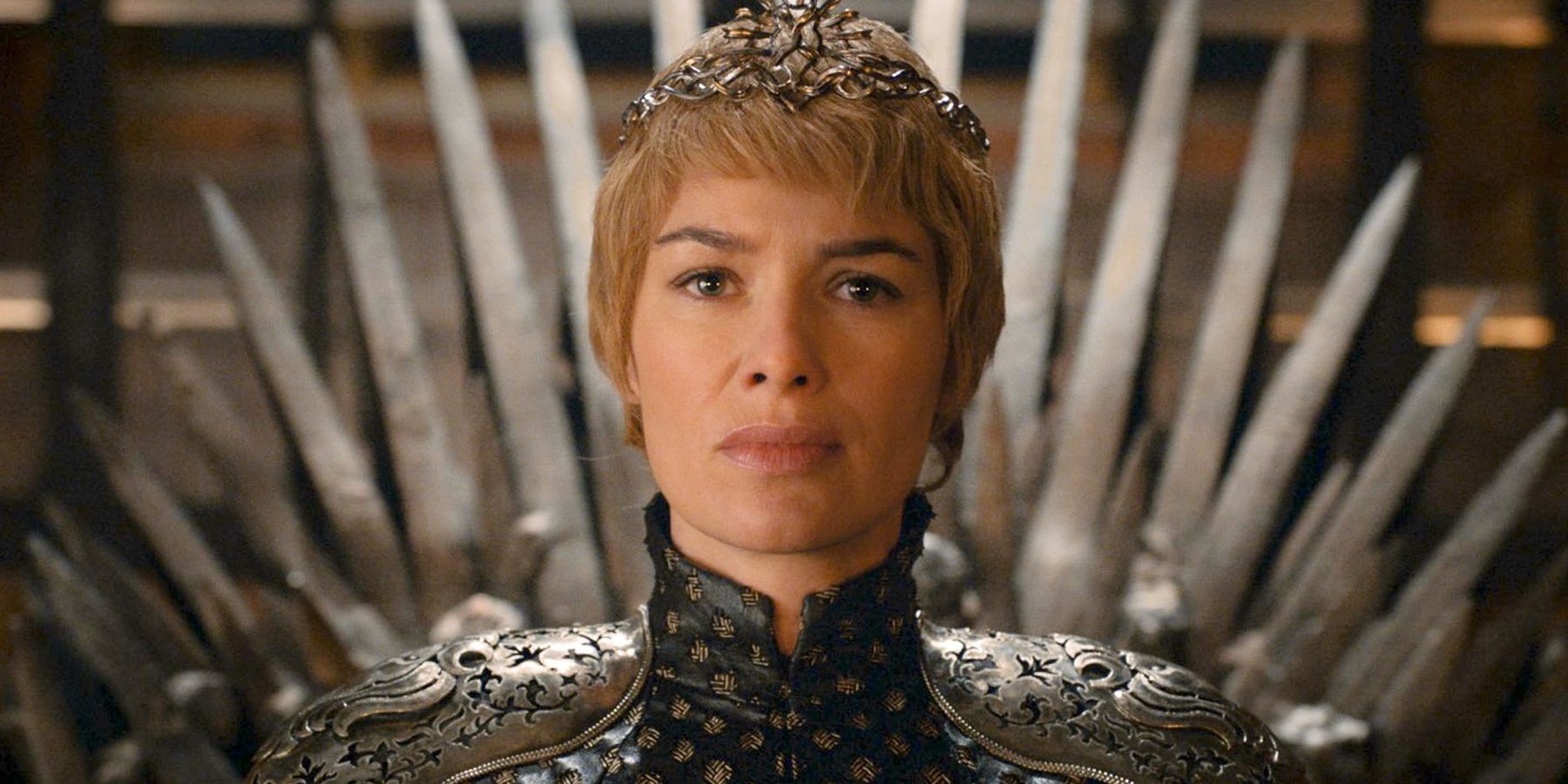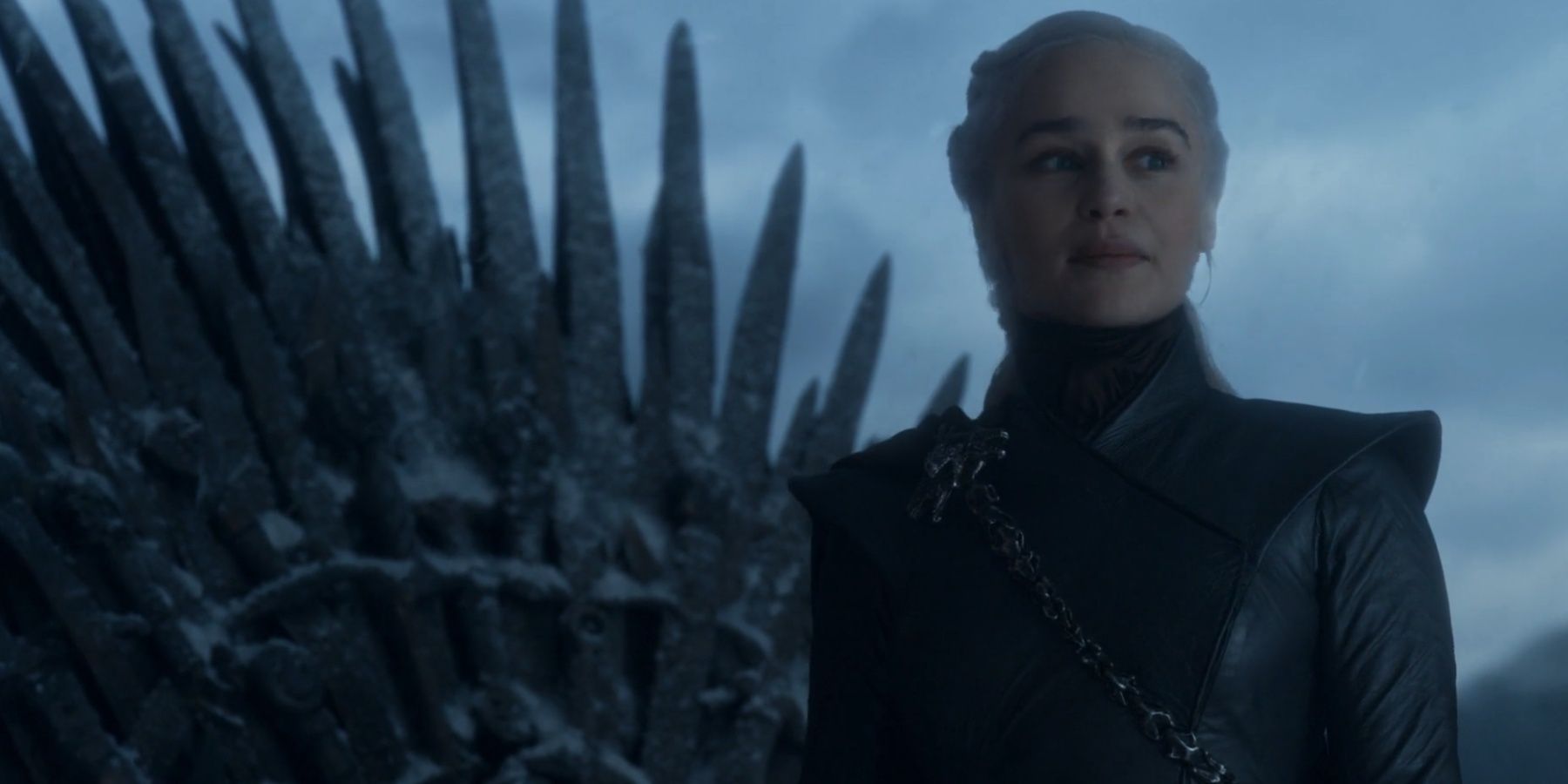The Seven Kingdoms on Game of Thrones have mainly been ruled by male monarchs. From the time of Aegon I Targaryen - the Conqueror who united six of the Seven independent Kingdoms to that of Bran Stark, the line of succession in Westeros has been dominated by males. The world of Thrones does frown whenever a queen lays claim to the Iron Throne. King Viserys I's firstborn daughter, Princess Rhaenyra Targaryen from House of the Dragon, and Mad King Aerys II's daughter, Daenerys Targaryen from Game of Thrones contested the Throne, and they had to deal with the unpleasantness surrounding the female succession.
Season 1 of HBO's House of the Dragon focuses on the question of female succession and provides diverse opinions on it. In the cold opening of House of the Dragon season 1, episode 1, "The Heirs of the Dragon," Jaehaerys I Targaryen convenes the Great Council of 101 AC to choose an heir. Jaehaerys' eldest descendant, Princess Rhaenys Targaryen, and eldest male descendant, Prince Viserys Targaryen have the strongest succession claim out of the fourteen claims heard at Harrenhal. In the end, all the lords paramount and lords vassal choose a male ruler, and thus Rhaenys becomes "the Queen Who Never Was." Similarly, Viserys' succession is put under the microscope by his Small Council after the deaths of his first wife, Aemma Arryn, and son, Baelon. Otto Hightower claims the king is left without an "obvious heir," or in other words without a son. When he suggests Rhaenyra be named the heir, Lord Lyonel Strong, sharply remarks, "No Queen has ever sat the Iron Throne."
Rhaenyra Targaryen
At the end of House of the Dragon's pilot episode, King Viserys I Targaryen decreed Rhaenyra as his heir. To that end, he summoned the lords of the Seven Kingdoms and made them swear fealty to her. Rhaenyra's claim to the Iron Throne was challenged by her younger half-brother, and Viserys and Alicent Hightower's firstborn son, Aegon Targaryen. This polarized the realm and led to the bloody civil war known as the Dance of the Dragons. Aegon II Targaryen's coronation as king of the Seven Kingdoms in House of the Dragon season 1, episode 9, "The Green Council," was perceived as an act of defiance by the Black faction. It was treasonous as it defied the late Viserys I's decree.
Rhaenyra was crowned as the queen with her father's crown by her husband and uncle, Daemon Targaryen at Dragonstone. Season 1 of HBO's House of the Dragon wrapped up right when her secondborn son, Prince Lucerys Velaryon, and his mount, Arrax were chased midair and plunged to their deaths, courtesy of Aemond Targaryen and his she-dragon, Vhagar. With that, House of the Dragon officially entered the Dance. The city of King's landing falls to Rhaenyra in the source material, i.e., George R. R. Martin's Fire & Blood. She sits as queen of the Seven Kingdoms for roughly half a year. However, her reign isn't peaceful, or stable and she perishes in the Dance of the Dragons.
Cersei Lannister
Cersei of House Lannister was crowned as queen of the Seven Kingdoms in Game of Thrones season 6, episode 10, "The Winds of Winter." Qyburn proclaimed her as queen of the Andals and the First Men and named her Protector of the Seven Kingdoms in the presence of the lords and ladies of Westeros. Hateful, cunning, and ruthless as Cersei was, she had eliminated her biggest enemies - the High Sparrow and the Faith Militant, Queen Margaery, her brother, Loras, and father, Lord Mace Tyrell, and Ser Kevan Lannister among others by having the Great Sept of Baelor destroyed by wildfire. Her last remaining child, King Tommen Baratheon took off his crown and jumped out the window after witnessing his mother's despicable act.
With all her children dead, Cersei sat the Iron Throne as the first official queen regnant in the history of the Seven Kingdoms. The audience in the throne room maintained pin-drop silence during the time of her coronation. The lords and ladies repeated after Qyburn and chanted "Long may she reign!" because they feared Cersei's wrath. Her reign came to a screeching halt in Game of Thrones season 8, episode 5 "The Bells," when Daenerys Targaryen arrived outside the city's gates with her armies and a fully grown dragon. Cersei and her brother/ lover, Jaime were crushed to their deaths in the Battle of King's Landing.
Daenerys Targaryen
In Game of Thrones season 8, episode 4 "The Last of the Starks," Lord Varys aka the Spider, who'd served many kings over the years, remarked that Jon Snow had "the better claim to the throne" because he was a war hero and people were drawn to him. Daenerys boasted both these traits as she, too, had fought in battles and people showed faith in her but Varys found Jon "temperate, and measured." Above all else, Jon was "a man" and therefore according to Varys, "more appealing to the lords of Westeros." When Tyrion Lannister proposed Daenerys and Jon could rule together as queen and king, Varys shot down the proposition saying she'd bend him to her will.
Daenerys did eventually take the Iron Throne but ironic as it was, she didn't get to sit on it or rule. Her reign began just when her merciless slaughter of the city of King's Landing ended. She gave her victory address, thanked her armies, and proceeded towards the throne room only to be assassinated by her nephew/ lover, Jon Snow. Primarily as a female, she faced more criticism than the male rulers on the show. She was scrutinized way more than any man who'd ruled the Seven Kingdoms. All in all, Daenerys' tragic arc points to the authority gap in the Game of Thrones universe.







